Dragon Ball FighterZ: Changing the face of its own video game history
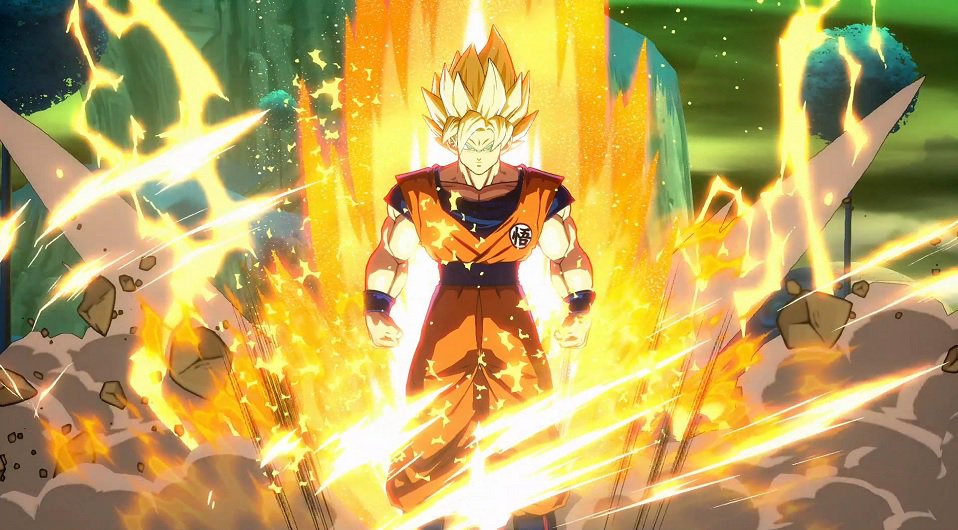
When it comes to adapting manga and anime into video games Dragon Ball has a large number of titles under its name. Branching out to various genres of gaming such as action platformers, role-playing games, card based games and of course, fighting games. The fighting in the Dragon Ball franchise is so iconic that even people who have little knowledge of the series can recognize it for the action and combat. In time though questions were beginning to arise about the proper approach on the Dragon Ball fighting games. Not in terms of which games are good and bad from an objective point of view, but rather the best direction for a Dragon Ball fighting game to go for. Should Dragon Ball video games be allowed to advance and grow to appeal to skilled players? Or should the games stick to fan service to appeal to fans and casual players? There was really no middle ground as players have always been divided on what makes a great Dragon Ball game even when it comes to titles that they all love, the debate about appealing to either the professional players or casual players continued to linger through the years. That is about to change though for on June 9th, 2017, Bandai Namco announced a new Dragon Ball game published by Arc System Works that is already gearing to not only change Dragon Ball fighting games but even make a name for itself among the entire genre is simply known as Dragon Ball FighterZ.
To say that the hype surrounding Dragon Ball FighterZ has been astronomical would be an understatement. Since its introduction people including YouTube creators Maximillian Dood and Team Four Star could not stop talking about not just how authentic the game looks but how it is the biggest Dragon Ball 2D fighting game to hit home consoles in almost a decade. While many Dragon Ball games released on home consoles before this particular title’s announcement they have never received this much coverage. That is not to say that the best titles released before were bad but as mentioned earlier most of them were usually catered towards casual players and fans for easy accessibility. So what is it that FighterZ has people so pumped up for this game now then compared to the titles of the past? The best way to understand it is to look back on the history of Dragon Ball’s video game lineup.
To cover the entire line up of Dragon Ball’s video game history could fill up an entire encyclopedia’s worth as there are almost over 100 titles, many exclusive to Japan before the series gained international popularity in the late 1990’s. Trying to cover all of those titles would be a very daunting task to say the least. So for the purpose of this analysis, four Dragon Ball video game series will be used in terms of their gameplay, accessibility and legacy in comparison to what FighterZ has to offer upon its release.
Budokai
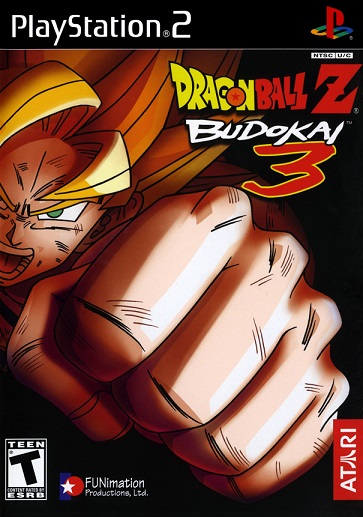
Developed by Dimps and published by Bandai and Atari, The Dragon Ball Z Budokai series is the most well-known in North America as the first title was made for the Playstation 2 in 2002 and the Nintendo Gamecube in 2003. The Budokai series approached its concept of a fighting game like the Japanese exclusive Butoden series and Hyper Dimension but had players fight on a 2.5D plane. Meaning characters could move around similar to the Tekken series but can also use super attacks through the usage of ki bars and characters can transform to become stronger and gain new attacks. Players could also customize their characters with capsules that can affect and change their stats to affect the outcome of a match. Modes included in the first title were a story mode where players could relieve the series up to the Cell Games including alternative stories that present different outcomes for the three villains of the game. Duel mode lets players fight one on one while World Match that let’s players fight against the computer tournament style that can go towards in-game currency that can be used at the shop for items. And finally the Legend of Mr. Satan (name changed to Hercule due to religious and cultural sensitivities) that serves as an arcade style game where players play as the joke character of the game, Mr. Satan himself, and take on fighters through ten rounds of various challenges and limitations. The reception for the first title was mixed at best but it sold enough copies to earn a sequel.
Budokai 2 released a year later with various changes such as cel-shaded graphics to mirror the look of the show while the game’s main feature was its focus on bringing in characters from the Majin Buu saga since they weren’t used in the previous title. The reception fared better than the previous title but not by much as it was mostly a roster and visual upgrade, it wasn’t then until Budokai 3 came out the year after that it made itself the definitive Dragon Ball Z game for many years.
Budokai 3 took the lessons learned from its predecessor and not only expanded on its roster and content but made the gameplay experience much smoother with its high production value to make it a huge success. Enough so that years later it was given a High Definition port in November 2012 for the Playstation 3 and Xbox 360 along with the first Budokai title. For years this was the game that many declared the definitive Dragon Ball fighting game for its content, engaging charm and easy to approach combat that helped players think of strategies later on. The major downside to the Budokai series though is that despite the improvements they made in time the characters can all feel the same keeping it away from being a definitive fighting game despite its gameplay mechanics. In games like Street Fighter II characters like Ryu and Chun-Li would have their own moves and gameplay style, Ryu is a well-rounded fighter and Chun-Li emphasizes on strong yet fast kicks. Giving the characters not only their own identity but makes the matches more unique each time the player plays with those characters more. Basically Budokai 3 is a fan service game first and a fighting game second. Despite the fall back though Budokai 3 can be commended to last this long as one of if not the most popular Dragon Ball game of all time.
Budokai Tenkaichi
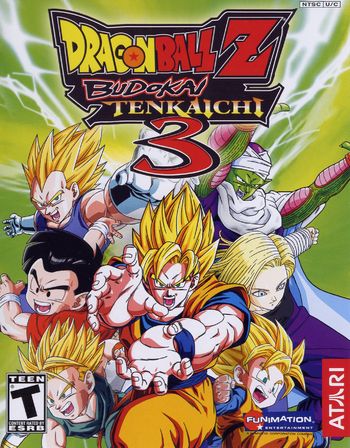
For a while the Budokai series was the definitive way to play Dragon Ball in North America, that was until the developer Spike decided to take the series into a different direction and gave us the Budokai Tenkaichi series for the Playstation 2. Also known as Dragon Ball Z: Sparking in Japan, this series changes not just the gameplay but also the entire mechanic to separate itself from the series that came before. The Budokai Tenkaichi titles use the “behind-the-back” camera perspective, similar to most 3rd person shooter titles. Meaning that players can move around more in an open 3D environment as they can dash, fly, fight and fire blasts in a larger arena. Another difference was the gameplay mechanics with its larger roster, the series removed transformations but now characters under various classes can have different abilities that can either strengthen or hinder the match making the player think of strategic ways to win a match. For example, large characters will not flinch from smaller characters’ melee attacks, and artificial humans can only regenerate ki in time at a consistent rate but can also be filled from landing melee attacks. With a total roster of 58 playable characters including 90 playable forms, the first Tenkaichi provided great content for fans of the series. However, the common criticism of its complex controls held it back from being a popular title among casual players. So while the first Tenkaichi game attempted to advance the feel of combat in the series than the Budokai series did, its own ambition were proven to be its own fault.
Another year passed and in 2006 Budokai Tenkaichi 2 came out not just for the Playstation 2 but was also one of the launch titles for Nintendo’s smash hit console, the Wii. The sequel plays the same but with an expanded roster of 129 characters, 135 in Japanese and PAL Wii versions. The one stand out for this game is on the Wii version as it is the first Dragon Ball video game to make use of the system’s motion controls. Using the Wiimote and Nunchuk together players were able to control their fighters by carrying a remote/nunchuk combo and mimic iconic moves from the series such as the Kamehameha and Galick Gun. The sequel’s reception had better praise from critics but shared the same criticism its complex controls like its predecessor.
Its sequel, Budokai Tenkaichi 3 once again makes some improvements from the 2nd game and expanded its roster. To this day not only is this title the franchise’s highest roster count with 161 playable characters but the game also has one of the highest roster count in the entire fighting game genre, 2nd only to Tobal 2 whose roster count is a staggering 200. The 3rd Tenkaichi game was praised for bringing in characters not just from DBZ, but also many from the original Dragon Ball series including Arale from Akira Toriyama’s other creation, Dr. Slump. This game just oozes content to make it feel like the ultimate Dragon Ball toy box experience, though much like Budokai 3 its major downside is that its characters all feel the same with the additional problem that some feel like model swaps. But its toy box aesthetic is what makes this particular title so appealing to rival Budokai 3 for the crown of the best Dragon Ball video game. Not for its fighting gameplay compared to other arena fighters but for its ability to let the player do whatever they want. There’s a reason fans love this game for its insanity.
Xenoverse

Released back in February 2015, the Xenoverse series is a unique approach to the Dragon Ball franchise where this series takes elements from the Japanese and South Korean exclusive MMORPG, Dragon Ball Online and the Japanese arcade games, Dragon Ball Heroes. Developed by Dimps and produced by Bandai Namco, Dragon Ball Xenoverse is the first major title of the series to let players across the globe emerge themselves into the Dragon Ball lore as their own original character. The gameplay mechanics is similar to the Tenkaichi series as a 3D arena fighter but what makes this series stand out is its story and customizations.
To summarize the story, the entire timeline of the Dragon Ball world is being distorted so the Time Patrol, lead by Future Trunks and the Supreme Kai of Time, calls forth for a new hero to help them in their quest to restore the timeline and save everyone. This is the heart of the Xenoverse games, players making their own avatar representative to not only interact within the story of Dragon Ball but allowing them to do all sorts of activities. Go on missions, fight or team up with other players online, earn money to earn gears and skills to change their avatars and even learn moves by training under iconic Dragon Ball characters as their instructor whether they’d be hero or villain. Speaking of customization, one of the unique aspects about the Xenoverse games is the ability to customize their characters not just by gender but also by species as they have five choices to pick from with their own strengths, weaknesses and certain abilities each can learn. Earthlings are more balanced with offense and defense, Saiyans have low health but high attack power and they get stronger when on low health and revived, Namekians have high health and stamina but low attack, Majins have high defense but low stamina, and the Freeza race are fast but have low attack. It is up to the player to decide how they want to play and customize their character to make them as strong as possible with an effective strategy.
Dragon Ball Xenoverse makes fans feel like they’re kids again when playing the game as they can interact with the series much more than ever before, but even Xenoverse has its fair share of flaws and sadly it is the flaws that holds it back from being the definitive Dragon Ball game. While the experience is fun for fans and new players the gameplay can get repetitive and monotonous when not fully ready. One problem is the reward system where players have to complete tasks in a certain way to have a good chance to not just get a high score but to earn an item they want, meaning if they don’t get it they have to play the same mission multiple times to get what they want. It’s a gamble and a waste of time. In addition if a player’s stats are not ready for high level opponents they will lose constantly even when they’re prepared to how their opponent works. Xenoverse 2 attempted to fix those problems by adding in more moves, fixing the reward system and adding content years later that coincided with the release of Dragon Ball Super, but the sequel is really just a more polished and updated version of the last game. Despite its flaws though Xenoverse 2 to this day is one of the most played Dragon Ball games in recent years for its online multiplayer approach and giving players the chance to create their own characters to interact within the Dragon Ball universe. The series may not be perfect but at the end of the day its approach will always be endearing to fans aplenty.
When analyzing these games made by Dimps and Spike it is clear how they contributed heavily to the lineage of the Dragon Ball games. However, there is one series that has been swept under the radar of most players today and can arguably be considered the most critical since this is the same developer that is developing FighterZ, Arc System Works.
Supersonic Warriors
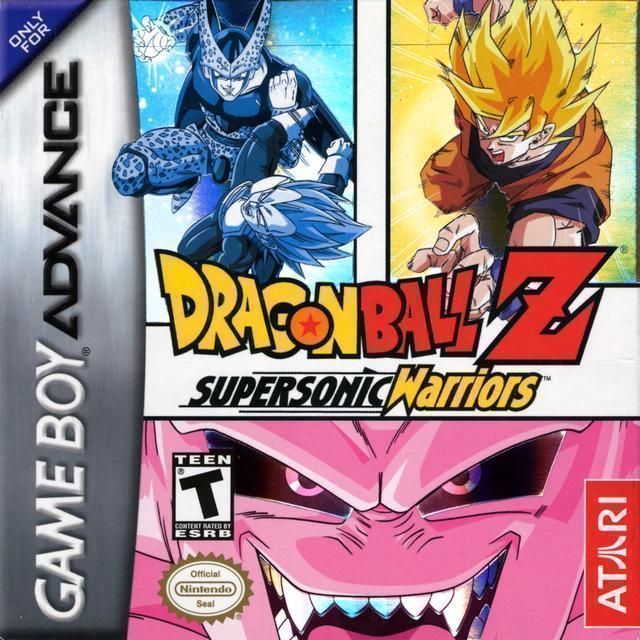
Released in June 2004, Arc System Works teamed up with Cavia to create Dragon Ball Z: Supersonic Warriors exclusively for the Nintendo Gameboy Advance. Famous for producing the Guilty Gear fighting game series, their first attempt with a Dragon Ball game especially for a handheld console was nothing short of remarkable. After the abysmal failure of Dragon Ball Z: Taiketsu for the same system, Supersonic Warriors fared better with controls that were easy to use despite a limited button control scheme for the handheld. Even utilizing characters to work as a team of three similar to the Marvel vs. Capcom franchise. The game also provides the usual content for players such as several modes including story, Z battle, challenge, training, free battle and remote battle so they can play with others who have the game and console. In addition the game’s story mode also provides many “what if” scenarios that encourages players to play the game more to see how each story is told uniquely outside of the series canon. The game’s combination of smooth gameplay and unlockable content made Supersonic Warriors a fan favourite for those who owned a Gameboy Advance as it received positive praise upon its release.
A year later Supersonic Warriors 2 released for the Nintendo DS made once again by Arc System Works and Cavia to give players and fans an advanced version of their previous game. Not much has changed aside the visual upgrade, improved gameplay, new modes and an increased roster. The game proved popular in Japan as critics loved the tag-team action and thought it was better than the last game, however the reception was average in North America as critics were more critical towards the setup, such as criticizing that the buttons should have been replaced with the touch screen controls. Regardless of which format would have worked for the sequel or not this game shows how Arc System Works is capable of utilizing what fans love about Dragon Ball. Providing content ripe with fan service and smooth controls to offer easy movement to recreate the speed and action the series is known for, and for their first works on two Nintendo handheld consoles that’s an impressive feat.
FighterZ
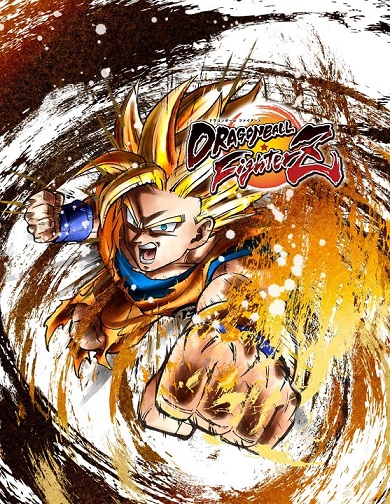
Upon the announcement of Dragon Ball FighterZ 2017 had a lot of fighting games released that year with titles such as Injustice 2 and Marvel vs. Capcom Infinite to name a few. The early footage of FighterZ presented last year had people comparing it to Marvel vs. Capcom with its 3 vs. 3 tag team format and fast paced action. The major difference that made people immediately prefer Dragon Ball FighterZ instead of Marvel vs. Capcom Infinite was its strong presentation. Infinite was strongly criticized for its lackluster visuals, characters looking plastic, questionable roster and its focus on the story mode resulting in a lack of single player content and shallow presentation. When comparing the two games many felt Capcom was afraid of changing with the times and instead chose to be conservative with their decisions. Whereas Bandai Namco along with Arc System Works was going all out with their latest title showing not only effort but dedication to both the Dragon Ball and fighting game communities. So much so that many people are claiming that not only would this game be an immediate but also a worthy title for tournaments such as the Evo Championship series as well as one of the best fighting games in recent years, a first for any Dragon Ball game that not even Budokai 3 was able to meet such recognition.
With all that said and done, Dragon Ball FighterZ shows how the developers behind the game not only know their own history with the franchise but also how to appeal to both casual players and dedicated fighters as this title may finally help both sides reach a common ground between fan service and skill in Dragon Ball games. Only time will tell now for pending on this game’s success if the same developers can break their limit once more in the future.
What do you think? Leave a comment.
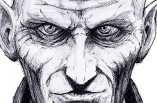
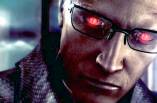
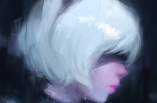

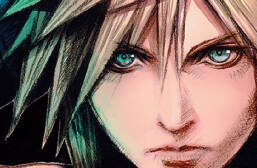
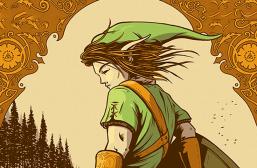
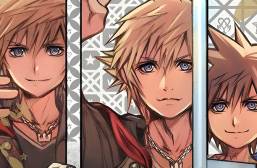
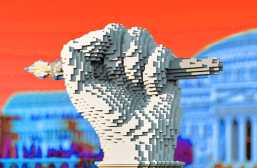
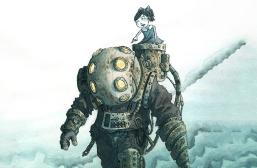


I played the beta and it was awesome. Definitely going to get this game since I’m an longtime Dragon Ball fan from the late 90’s. I should point out that I’m an huge fighting game fan.
It’s funny how 3D fighters never quite prevailed. I always thought it was the way forward once Soul Blade/Soul Calibur came along, they were that good. And, the earlier Dragon Ball Z games in 3d were cool too. I haven’t played this, but I will.
Is it worth getting even if I haven’t played Dragon Ball Fighter A to Y?
You don’t have to worry about playing any other game to get into this one, a lot of them are pretty self-contained so this one is no different! If anything this would be the perfect game to start of with ^^
Yeah, the other Dragon Ball fighting games have been 3d fighters that don’t play anything like this. You won’t be missing anything by only getting Dragon Ball FighterZ and not the others.
These types of intense combo-based fighting games never last long enough with me to reach any level of competitive competence.
Something about the practice of repeating content over and over and over just makes me realise all the stuff I’m not honing in real life quite quickly, so I put down the controller with a twang of shame in my stomach and that niggling voice in the back of my mind calling me a procrastinating failure of a human. *Le sigh*
Same, I’ve never been good at pushing multiple buttons in certain order quickly, same with all the trick moves on FIFA, just can’t (be bothered to put in the time to) master them. I’d imagine a lot of people can just do them straight away, or once you learn one you get the hang of it.
The combos in Fighterz are easy, and primarily rely on a repetition of light medium light medium, and close with a light light light, which inputs light medium heavy for you automatically while also drawing you close enough to the other fighter that you cannot miss.
Good game despite the alarming amount of DLC (typical arc) and the online problems.
My son was playing this. We dropped all the settings to the lowest, plugged it into a 4K screen and it looks Street Fighter-esque.
FighterZ is excellent and accessibility is a massive thing for it.
I let my 7 year-old nephew’s play it and they mashed their way through an impressive looking battle which was closely fought.
Compare that to when they play Street Fighter V and only through medium kicks at each other.
I’m too old for fighting games. The reflexes for them are long gone. Possibly peaked at Tekken 6. *Sob*
Never had so much fun with a fighting game.
I have to say, I used to play a dragon Ball z Mugen (don’t remember Wich one) back in the 2007, and it was awesome, i remember all the characters had the powers and movements of the anime, I remember the final flash from vegita or the Kamehameha from ssj3 Goku, even when vegita kill himself against Majin Boo, all the combos, the game was pretty much like this actual game (only that some characters were stronger than other), of course with a very bad graphics and no history, and it was free.
I love how many competitive gamers hate the combo mechanics but can’t argue against the game itself being fun, no matter what skill level you are. This is a game that you can rage at, but come back to with a smile on your face.
This is what fighting games should aim for, albeit with a varying pick up and play degree. As long as it’s all fun.
I do really enjoy the game and think there is a need for it. But two things come to mind. This is basicly the same game that 2d fighters like streetfighter and MvsC have been making since the 80s/90s just with a Dragon Ball skin and second i still want to feel as close to being a character from Dragon Ball as possible and the 3d games like Xenoverse just do it more justice. No reason why we cant have both though, more Dragon Ball the better!
This purposeful frame limitation on the 3D modeled characters are UNBEARABLE for me. It’s jarring and unnecessary. I don’t get nostalgic over the lack of animation frames in Dragon Ball. I’d rather it be smooth model animations in game, considering the MORE than capable ability to do so.
Budikai 3 was better, this one isn’t true 3d! The graphics are better but I’m not buying it. Xenoverse 2 & Budikai 3 are the tops for me.
Amazing article!😀
I would prefer another game like budakai tenkaichi 3 or raging blast 2 with all the individual characters and 3d fighting style.
Great article on DB!
2D is almost a gamebreaker for me with this game, I hate being limited in my movement i fell like i am playing street fighter on my sega back when i was a kid. we have moved past this system inho
The game is good and all… But im not sure its going to last long in terms of replay value. The combos are not even that hard honestly… and I mean i do dirty combos with gotenks, trunks and gohan. Its just like all the other fighting games… Everyone hypes it up, play all day long then goes ghost in like 4 months.
I feel like the game is too easy. All i have to do its press YYYY and i can do a full combo plus a special move.
Best Dragon Ball fighting game since Budokai 3.
Worst thing about this game is the loading time between matches. It’s like 40 seconds everytime. Alot of time wasted watching loading screens. Also the story is meh! After 2 weeks I can see trade in.
By far one of the worst dbz games to date…cool graphics/animation eye candy BUT horrible gameplay…button mash facerolling unbreakable combos with one of the poorest block/defence system ever seen….poor champ roaster…no actual meaningful transformations… could keep talking all day about the negatives but you already know them..
Looks so much like Street Fighter.
More of Marvel vs. Capcom, compare this game to Street Fighter V and you’ll see what I mean.
I stopped play db games after budakai 3, that was the best one imo. This one looks cool tho, reminds me of street fighter / MVC.
I spent many hours playing the Budokai series growing up. Good article!
I played a couple of the Budokai games over the years. They were fun. But FighterZ is definitely the best in the series so far. Tons of fun, flashy, easy for new fans to get into, and up to date with DB Super.
Games were always good. People who grew up with Dragon Ball would play the game if the stories are based on pre-Dragon Ball Super.
Actually the story is pretty original for the game and has some elements from Super, but the comedy is actually pretty much like old school dragon ball even with some 4th wall breaking moments.
I love DBZ Games
I had no idea Arc System Works had developed a Dragon Ball game before FighterZ. I may need to check out Supersonic Warriors.
Being an Otaku and a FGC member is a dual citizenship with difficulties. Fighting games were (and still are) anime’s go-to genre for game adaption but they weren’t “real” fighting games. It resulted in a sort or doublethink where you knew that these games weren’t as complex or deep as you wanted it to be but you had to ignore it for the sake of fan service; often finding depth where there actually was none. It was all we had, all we knew, and knowing who me and my crew were back then, all we deserved.
But then, we became older, more mature, less complacent. These games had to get better; they had to mature with us. Otherwise, we would just watch anime and play Tekken (we still do that).
Luckily for everyone, FighterZ came in and provided what almost everyone secretly (or loudly and drunkenly) armchair developed in their minds: A “real” one. A proper fighting game. One with mechanics, one with meta.
The fact that it was handled so well on the first go (a result of Arc System Works’ pedigree) was the final confirmation for many: this is the way it should have been, this is the way it needs to be. Anime games need to be taken seriously; they need to be respected. No longer just cash-ins. No longer just fan-service. In my opinion, no longer just fighters (but that’s a seperate train of thought). It has to be this way both for the sake of the game’s quality and the adapted series’ reputation.
Eyes of Heaven and One’s Justice are certainly serviceable games but they’re of a different era; an era FighterZ ended. It’ll take some time to see it manifest but JoJo and Hero Aca will be among the adapted series to learn from Arc’s work and follow FighterZ’s precedent.
We were already in the new golden age of fighting games but now we are also on the cusp of a revolution in adaption.
Even though I’m a big fan of Fighting games, I’ve never been a fan of Dragonball Z. However, the amount of detail into every character and their moves is to be commended on the highest degree. The music, the stages, and overall personality of the game almost surpasses the source material in terms of hype and it maintains a large and vocal community. It honestly makes a Marvel vs Capcom fan like myself jealous on how much love and attention was given to these established characters compared to MVC infinite.
It effectively and efficiently told every other fighting game company to step up the competition and as of now. I still don’t think any other team based fighter has risen to Arc System’s challenge.
Hi there to every , since I am actually eager of reading this weblog’s post to be
updated daily. It contains fastidious information.
Harold Burton